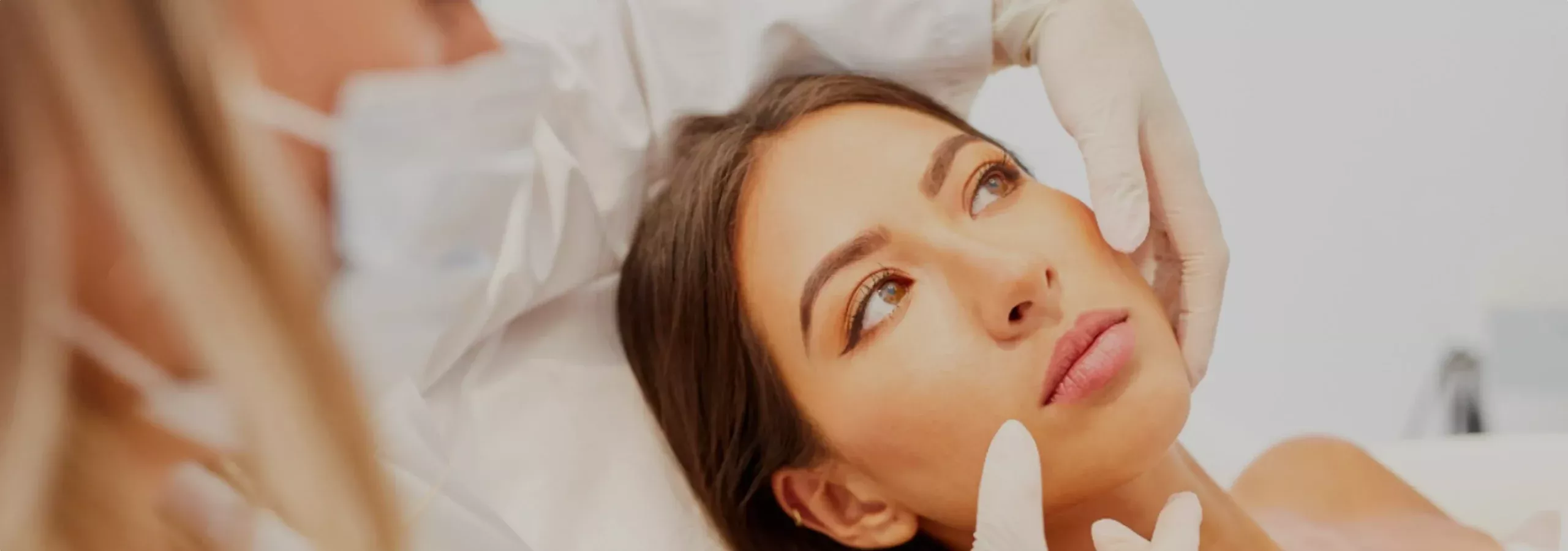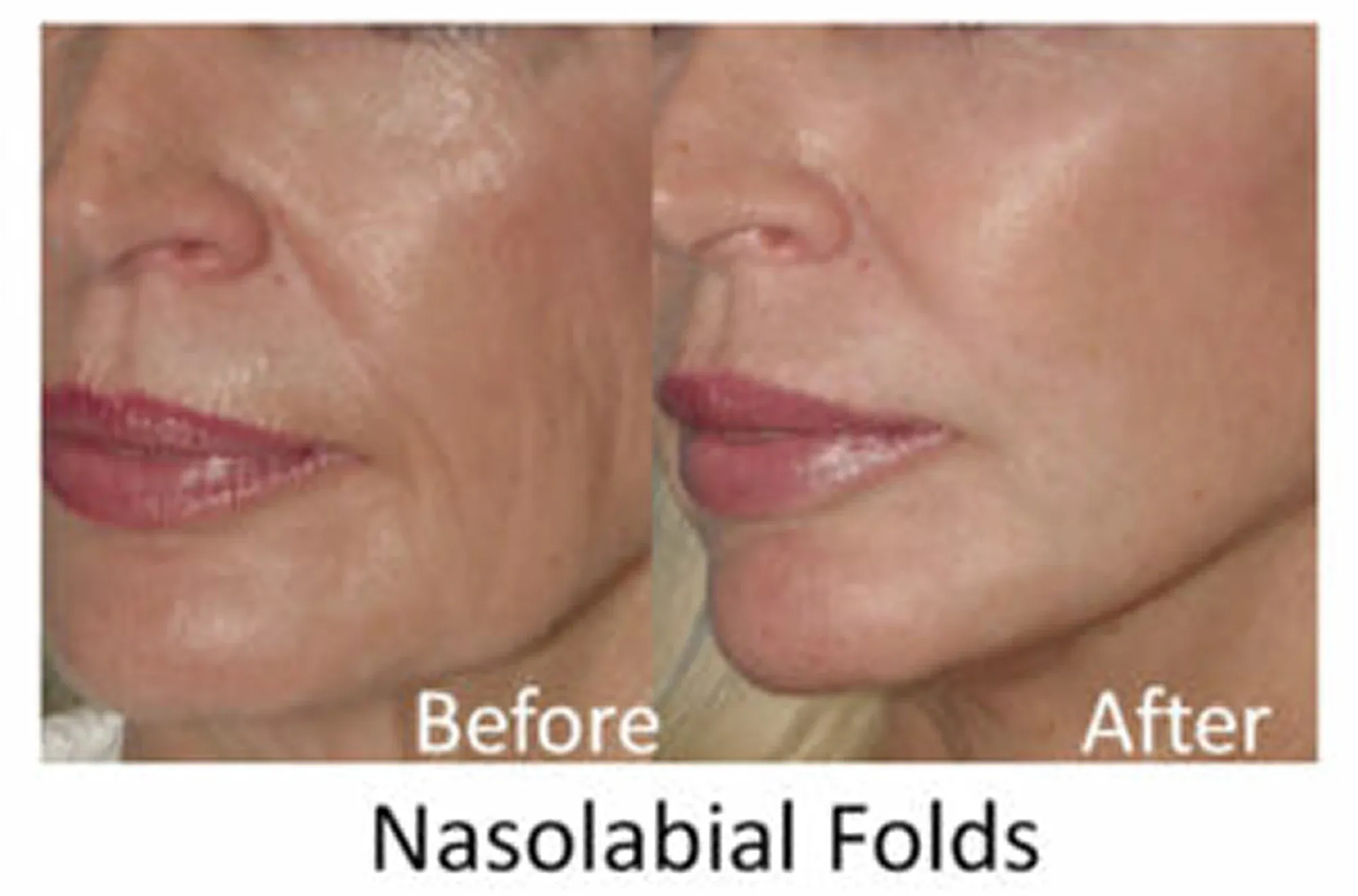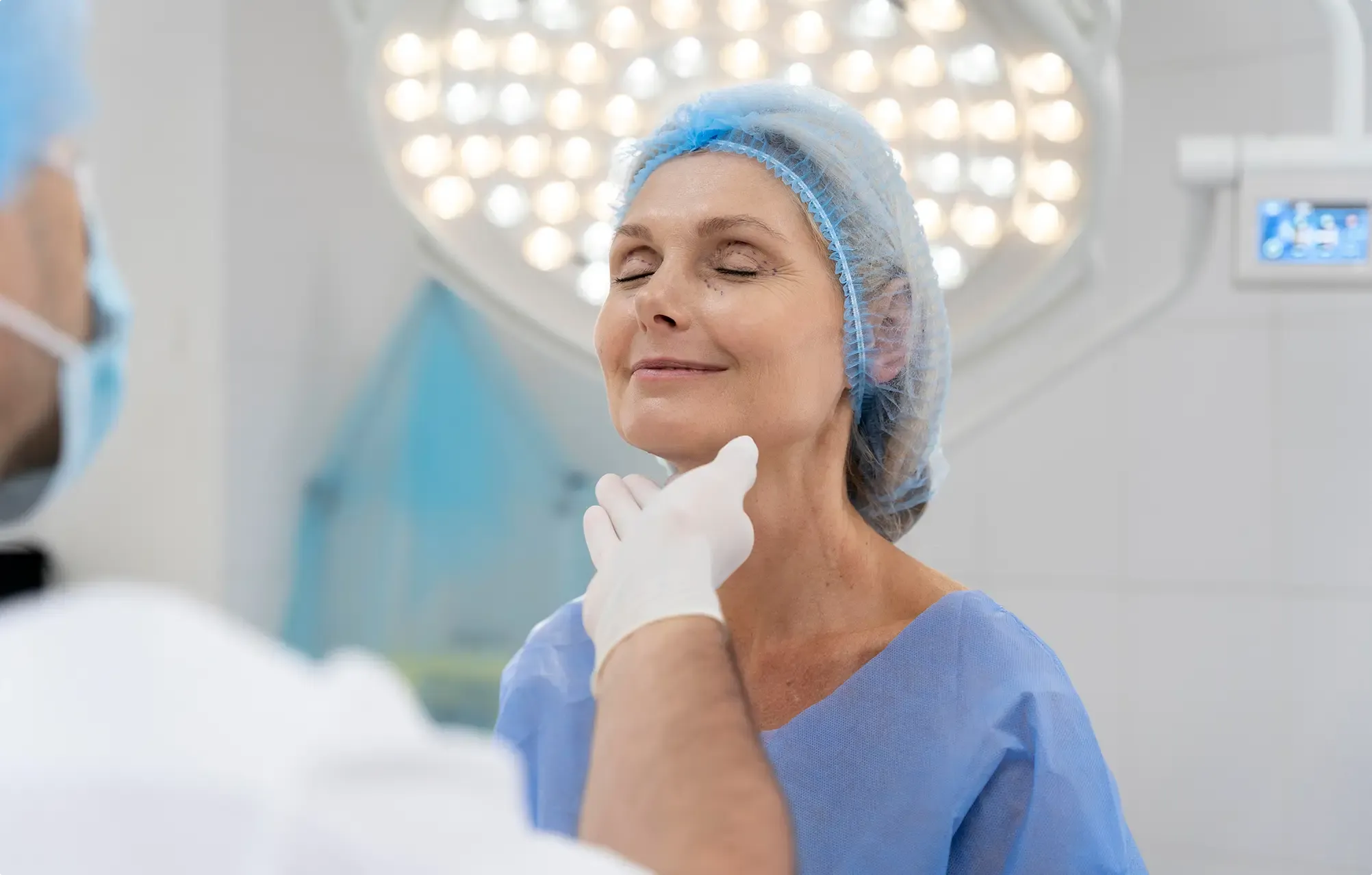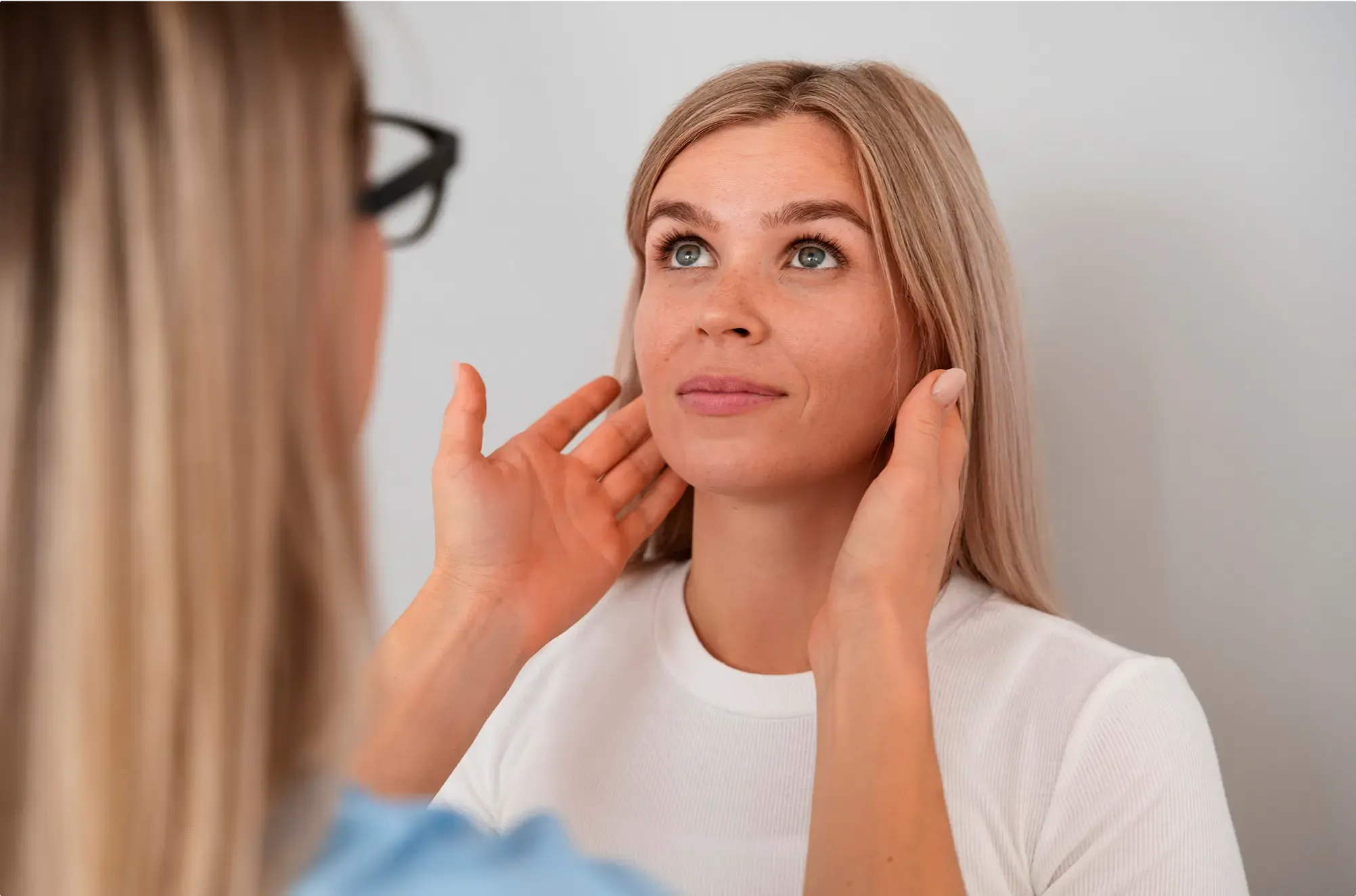
Experience Timeless Beauty with Expert Precision
Manhattan residents seeking a graceful approach to facial rejuvenation turn to Mourad NYC for outstanding facelift results. This procedure offers more than surface improvements—it’s about restoring facial harmony and reflecting the youthful energy you carry within.
Dr. Moustafa Mourad, a distinguished double board-certified facial plastic surgeon, brings a masterful combination of surgical expertise and artistic sensibility to each facelift. His NYC-based practice attracts patients from all over Manhattan who want refined, balanced results.
Dr. Moustafa Mourad, a distinguished double board-certified facial plastic surgeon, brings a masterful combination of surgical expertise and artistic sensibility to each facelift. His NYC-based practice attracts patients from all over Manhattan who want refined, balanced results.
What is a Facelift?
A facelift, or rhytidectomy, is a surgical solution for reversing visible aging signs caused by sagging skin, drooping muscles, and volume loss. Over time, the structure of the face changes, resulting in deep folds and jowls. A facelift lifts and repositions this structure, removes excess skin, and redefines natural contours.
From comprehensive full facelifts to more targeted mini-lifts, Dr. Mourad customizes each procedure to meet your needs and goals. For individuals in Manhattan, his personalized care and attention to natural aesthetics offer a rejuvenated look that still feels like you.
From comprehensive full facelifts to more targeted mini-lifts, Dr. Mourad customizes each procedure to meet your needs and goals. For individuals in Manhattan, his personalized care and attention to natural aesthetics offer a rejuvenated look that still feels like you.

Benefits of a Facelift
At Mourad NYC, a facelift can deliver natural-looking, durable results that help you reconnect with your youthful appearance. Some advantages are:
- Softening pronounced wrinkles and folds near the nose and mouth
- Elevating drooping cheeks to regain lost volume
- Firming skin along the jawline to minimize jowls
- Defining the chin and neck area more clearly
- Tightening loose, crepey skin for a smoother texture
- Increasing self-assurance by harmonizing facial features
- Offering outcomes that continue to look refined with time
Which Areas Can Be Corrected with a Facelift?
Facelift surgery addresses a variety of facial aging concerns by elevating deep tissue layers, tightening muscles, and excising excess skin. Dr. Mourad applies advanced surgical techniques designed to produce natural, lasting enhancements customized for each patient. The most frequently improved regions include:
Jowls: Aging causes facial tissues to shift downward, collecting along the jawline and creating a heavy or squared look. Dr. Mourad lifts and repositions the lower cheek structures to smooth and rejuvenate the jawline contour.
Neck Banding: Vertical bands on the neck arise as neck muscles tighten over time. By suturing these muscles beneath the chin, Dr. Mourad sculpts a cleaner and more defined neck profile.
Loose Skin: Drooping skin on the face, neck, and forehead often leads to a tired or aged expression. The facelift lifts underlying facial tissues before removing excess skin carefully to avoid tension, resulting in a refreshed and natural look.
Fat Under the Chin: Also called submental fullness, this condition can be influenced by genetics, aging, or weight gain. Dr. Mourad frequently performs liposuction to remove this fat, followed by skin tightening techniques to enhance neck and jawline definition.
Midface Volume Loss: Sagging cheek tissue causes the midface to appear flat and deepens nasolabial folds. Lifting this tissue restores cheek volume and improves overall facial harmony. Additional volume with cheek implants or fillers may be recommended as needed.
Nasolabial Folds: These lines, extending from the nose to the mouth corners, deepen as cheek tissues descend. Repositioning the underlying layers softens these folds, and fillers can provide further subtle improvements.
Jowls: Aging causes facial tissues to shift downward, collecting along the jawline and creating a heavy or squared look. Dr. Mourad lifts and repositions the lower cheek structures to smooth and rejuvenate the jawline contour.
Neck Banding: Vertical bands on the neck arise as neck muscles tighten over time. By suturing these muscles beneath the chin, Dr. Mourad sculpts a cleaner and more defined neck profile.
Loose Skin: Drooping skin on the face, neck, and forehead often leads to a tired or aged expression. The facelift lifts underlying facial tissues before removing excess skin carefully to avoid tension, resulting in a refreshed and natural look.
Fat Under the Chin: Also called submental fullness, this condition can be influenced by genetics, aging, or weight gain. Dr. Mourad frequently performs liposuction to remove this fat, followed by skin tightening techniques to enhance neck and jawline definition.
Midface Volume Loss: Sagging cheek tissue causes the midface to appear flat and deepens nasolabial folds. Lifting this tissue restores cheek volume and improves overall facial harmony. Additional volume with cheek implants or fillers may be recommended as needed.
Nasolabial Folds: These lines, extending from the nose to the mouth corners, deepen as cheek tissues descend. Repositioning the underlying layers softens these folds, and fillers can provide further subtle improvements.
Are You a Candidate for a Facelift in Manhattan?
If you’re from Manhattan and find that your outward appearance no longer conveys the energy you feel inside, a facelift might be the right step. You could be an ideal candidate if:
- You’ve begun to see skin looseness or deeper facial folds
- There’s a loss of jawline sharpness or visible jowling
- Your neck shows signs of banding or excess fat deposits
- You’re in good overall health and able to heal well after surgery
- You’re looking for results that naturally enhance your features over time
What To Expect During
What To Expect During Your Consultation
The first step in your facelift experience is a one-on-one consultation with Dr. Mourad, where he takes the time needed to understand your personal goals and conduct a meticulous analysis of your facial structure. This meeting lasts at least an hour and includes a comprehensive review of your medical background, an extensive facial examination, and a thoughtful discussion regarding the changes you wish to achieve.
Dr. Mourad will capture photographs of your face from various angles to help highlight specific features you may want to improve. Additionally, he may use advanced computer imaging to simulate potential results, providing a clear visual of what to expect. Although these computer-generated images are not definitive guarantees, they are instrumental in shaping a shared vision for your final outcome.
This consultation also serves as a time for you to ask detailed questions, explore different surgical options available, and feel completely informed and comfortable before deciding to move forward. Dr. Mourad will thoroughly review the surgical plan, the anticipated recovery timeline, and what you can expect throughout the entire process.
Dr. Mourad will capture photographs of your face from various angles to help highlight specific features you may want to improve. Additionally, he may use advanced computer imaging to simulate potential results, providing a clear visual of what to expect. Although these computer-generated images are not definitive guarantees, they are instrumental in shaping a shared vision for your final outcome.
This consultation also serves as a time for you to ask detailed questions, explore different surgical options available, and feel completely informed and comfortable before deciding to move forward. Dr. Mourad will thoroughly review the surgical plan, the anticipated recovery timeline, and what you can expect throughout the entire process.
What To Expect During Your Facelift Procedure
Each facelift Dr. Mourad performs is tailored with exacting precision and care. When you arrive at the surgical facility on your procedure day, the medical team will guide you through the preparation process and help you feel relaxed and at ease.
Throughout the surgery, Dr. Mourad meticulously lifts and repositions the deeper layers of your face, skillfully removes excess skin, and enhances your natural contours. His use of modern bleeding control methods means that drains are unnecessary and discomfort is kept minimal.
Post-surgery, a light pressure dressing supports your healing tissues and is removed the following morning either in the office or at your hotel. You’ll stay overnight at a nearby hotel with a dedicated sitter to help ensure a restful and safe recovery.
Pain management typically involves just one dose of prescription medication before switching to Tylenol. Neck tightness during the first few weeks is normal and actually supports the long-term sculpted definition. Bruising and swelling along the neck and facial sides start to fade within days, with most swelling disappearing within two weeks. Refinement of your results continues for up to a year.
One week after your surgery, you’ll come back for a follow-up appointment, with further visits as needed to monitor healing progress. It’s important to avoid heavy exercise during the first three weeks to support optimal results.
Throughout the surgery, Dr. Mourad meticulously lifts and repositions the deeper layers of your face, skillfully removes excess skin, and enhances your natural contours. His use of modern bleeding control methods means that drains are unnecessary and discomfort is kept minimal.
Post-surgery, a light pressure dressing supports your healing tissues and is removed the following morning either in the office or at your hotel. You’ll stay overnight at a nearby hotel with a dedicated sitter to help ensure a restful and safe recovery.
Pain management typically involves just one dose of prescription medication before switching to Tylenol. Neck tightness during the first few weeks is normal and actually supports the long-term sculpted definition. Bruising and swelling along the neck and facial sides start to fade within days, with most swelling disappearing within two weeks. Refinement of your results continues for up to a year.
One week after your surgery, you’ll come back for a follow-up appointment, with further visits as needed to monitor healing progress. It’s important to avoid heavy exercise during the first three weeks to support optimal results.

Why Patients Trust Dr. Mourad
Many individuals from Manhattan choose Mourad NYC for facelift procedures thanks to the high level of skill, aesthetic finesse, and individualized care. Dr. Mourad’s approach is rooted in creating refreshed appearances that are subtle, balanced, and tailored to the patient’s facial structure.
His knowledge of both traditional and modern techniques allows him to design a facelift that fits your goals and lifestyle. Throughout the entire process, Manhattan patients benefit from consistent, expert guidance—Dr. Mourad stays actively involved from consultation through recovery. It’s that personal commitment that has earned the trust of so many patients from Manhattan seeking naturally enhanced results.
His knowledge of both traditional and modern techniques allows him to design a facelift that fits your goals and lifestyle. Throughout the entire process, Manhattan patients benefit from consistent, expert guidance—Dr. Mourad stays actively involved from consultation through recovery. It’s that personal commitment that has earned the trust of so many patients from Manhattan seeking naturally enhanced results.
What Are the Risks of a Facelift?
While facelifts are widely recognized as safe and effective procedures when performed by an experienced surgeon, there are still some risks involved, as with any type of surgery. Possible complications include:
- Infection
- Anesthesia-related reactions
- Fluid or blood pooling beneath the skin
- Nerve alterations, which can be temporary or permanent
- Slow or impaired wound healing
- Noticeable or uneven scarring
- Hair thinning near the incision sites
- Changes in skin color or pigmentation
- Irregularities in skin surface or contour
- Results that may fall short of expectations


Transform Your Look
Schedule Your Appointment with Dr. Mourad
For those living in Manhattan and exploring facelift surgery, Dr. Moustafa Mourad offers a thoughtful, results-driven approach that maintains your authenticity. Book a consultation today and experience customized, expert care throughout every phase of your journey.
Frequently Asked Questions
Why choose Dr. Mourad over other facial plastic surgery clinics?
For those in Manhattan seeking refined facial rejuvenation, Dr. Moustafa Mourad offers unparalleled expertise. As a double board-certified surgeon, he employs advanced facelift techniques tailored to individual needs, ensuring natural-looking results. Manhattan patients value his commitment to personalized care and meticulous attention to detail throughout the surgical journey.
How long do the results of a facelift last?
Residents of Manhattan can anticipate facelift results that endure for 10 years or more. Dr. Mourad’s proficiency in techniques like the deep plane facelift contributes to lasting enhancements, keeping you looking refreshed well into the future.
What is the recovery time after a facelift?
For those in Manhattan, the typical recovery timeline involves two to three weeks of initial healing, during which swelling and bruising subside. Dr. Mourad provides comprehensive post-operative care, ensuring patients feel supported and informed as they return to their daily routines.
Which types of facelift surgeries do you perform?
Each face is unique, and Dr. Mourad’s facelift techniques reflect his commitment to addressing individual concerns with personalized care. During your initial consultation, he will assess your facial anatomy and goals to recommend the most appropriate surgical approach.
- Deep Plane Facelift: This advanced method lifts not only the skin but also the deeper layers of facial tissue, creating natural-looking movement. Incisions are skillfully hidden around the ear and within the hairline. The procedure also involves repositioning underlying facial structures, removing excess skin, and frequently includes neck liposuction. A small incision under the chin may be used to tighten neck muscles for enhanced contour.
- Mini Facelift: Targeting early signs of aging like sagging jowls and lower face laxity, the mini facelift uses smaller incisions and offers a quicker recovery. It effectively lifts and tightens the cheeks and jawline, delivering a refreshed look without extensive surgery.
- Short-Scar Facelift: This technique closely resembles the deep plane facelift but uses a shorter incision that does not extend into the hairline. It is ideal for patients with minor neck sagging who want to minimize scarring. Candidate selection is important to achieve the best outcome.
- Endoscopic Facelift: Performed with a small camera and instruments through tiny incisions, this facelift addresses the midface and neck. It leaves minimal visible scarring and is a great option for patients wanting to improve specific areas without a comprehensive facelift.
- Skin Lift: When skin laxity is mild and underlying facial structures remain firm, a skin lift can remove excess tissue and rejuvenate the face’s appearance. This procedure can also help correct scars from previous facelift surgeries and is typically done under local anesthesia in a clinical setting.
- Lunchtime Lift: Utilizing threads or laser treatments, this quick lift requires minimal downtime but offers only short-term results. Side effects such as dimpling or puffiness can occur. Although Dr. Mourad is experienced with these techniques, he does not recommend them due to their unpredictable and temporary nature.
Is a facelift painful?
Pain after a facelift is usually mild and well-controlled. Most patients take prescription pain relief for the initial day following their procedure before moving on to milder medications like Tylenol. It is common to feel some tightness or stiffness in the neck region, which helps stabilize the tissues and supports a successful neck lift result.
Can other procedures be done at the same time?
Yes, combining procedures is quite common to achieve more balanced facial rejuvenation. Facelifts are often paired with rhinoplasty, brow lifts, eyelid corrections, or augmentation with cheek and chin implants. Moreover, non-surgical enhancements such as laser treatments, dermal fillers, or Botox can be included to smooth skin texture and enhance overall facial contours.
Will I have visible scars?
Incisions for facelifts are strategically placed in discreet locations such as behind the ears and within the hairline. This placement minimizes the visibility of scars. Dr. Mourad’s careful surgical technique minimizes tension on the skin to foster smooth, subtle healing. As healing progresses, scars typically fade well and become very difficult to notice.
Does insurance cover facelift surgery?
Facelift surgery is classified as elective cosmetic surgery and thus is not covered by most insurance policies. If your treatment plan involves procedures with a functional purpose—like eyelid surgery to improve vision—those specific parts might be eligible for insurance reimbursement. We will discuss insurance possibilities with you during your consultation to ensure full transparency.
Am I too young or too old for a facelift?
For those in Manhattan curious about facelift surgery, candidacy depends less on your age and more on your overall health, skin condition, and desired results. Typically, patients between 40 and 70 benefit from surgical facial rejuvenation that corrects sagging skin, excess fat, and weakened muscles, allowing them to regain a youthful look that aligns with their lifestyle and goals.
How does a facelift differ from non-surgical treatments?
Manhattan residents frequently explore non-surgical treatments aimed at smoothing the skin or restoring volume, but these options cannot address the deeper structural sagging that occurs with aging. A facelift lifts and tightens the underlying tissues and skin, providing more significant, natural-looking, and long-lasting results that non-surgical methods cannot match.




